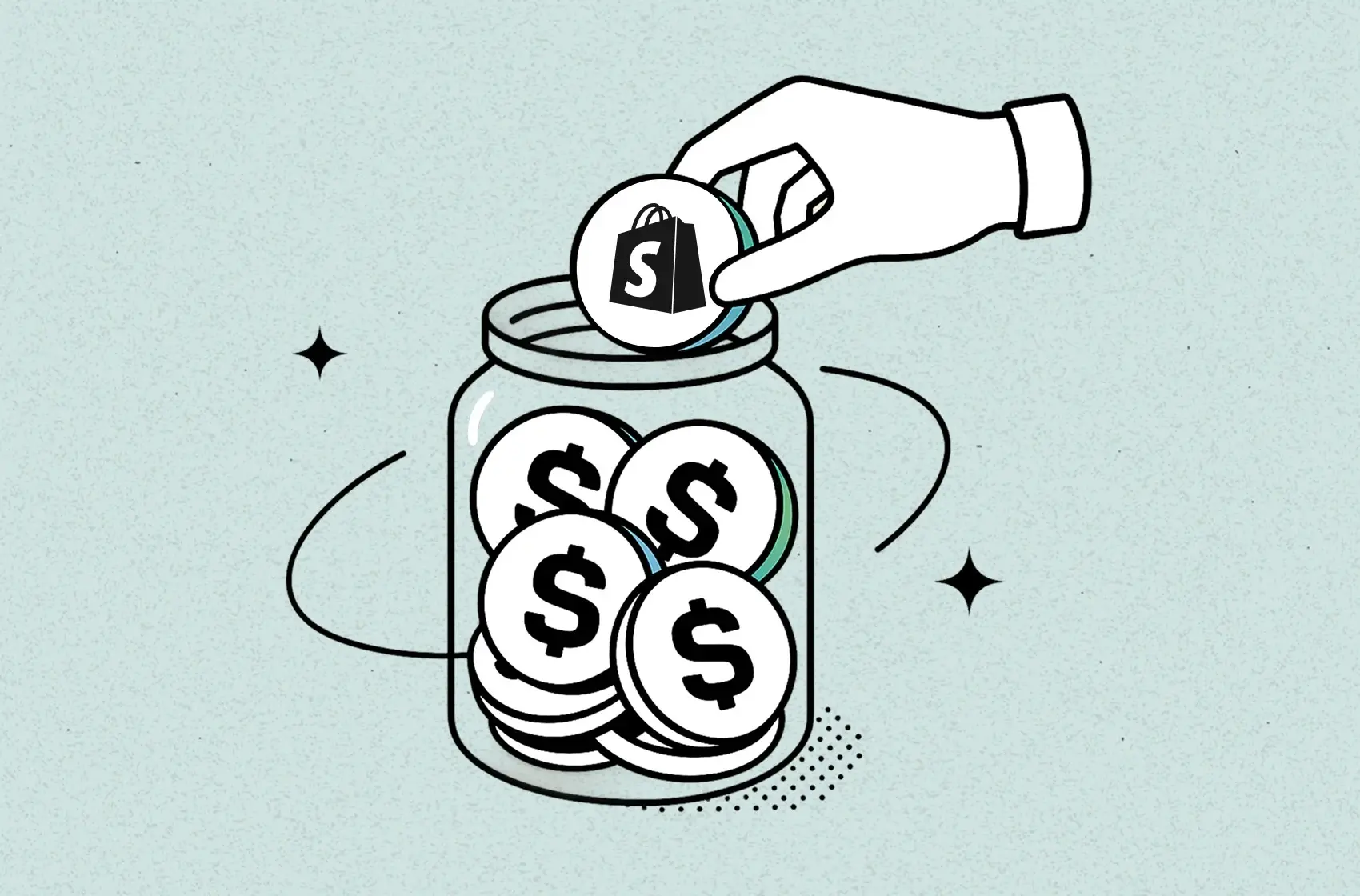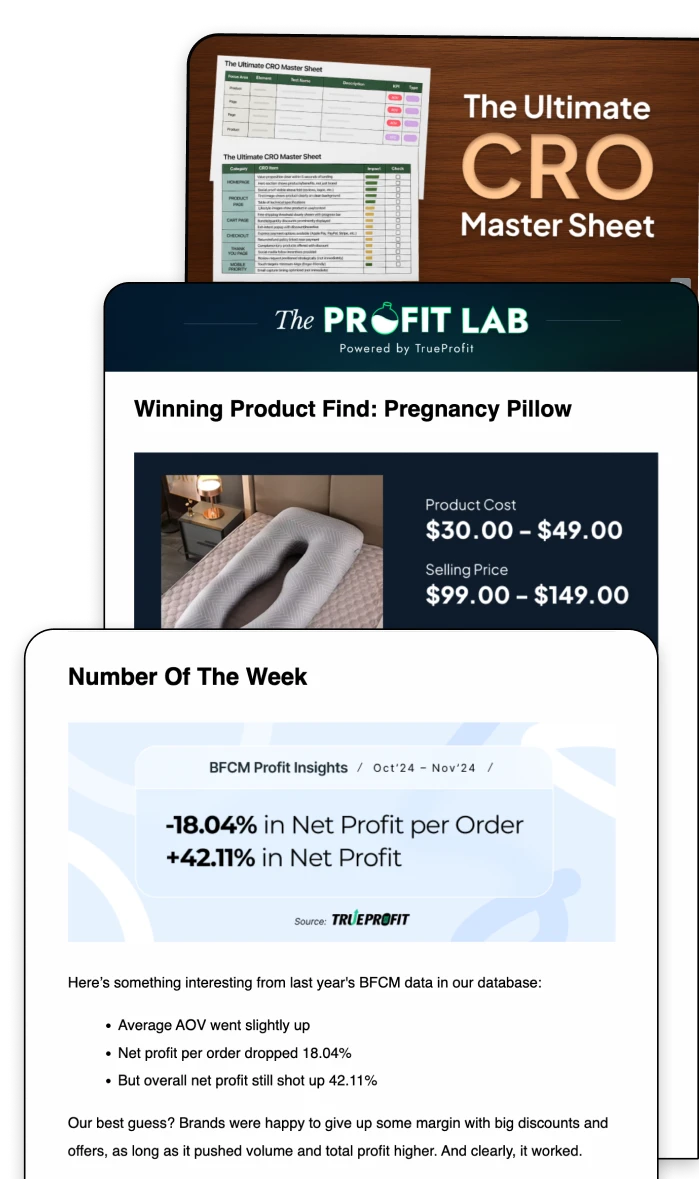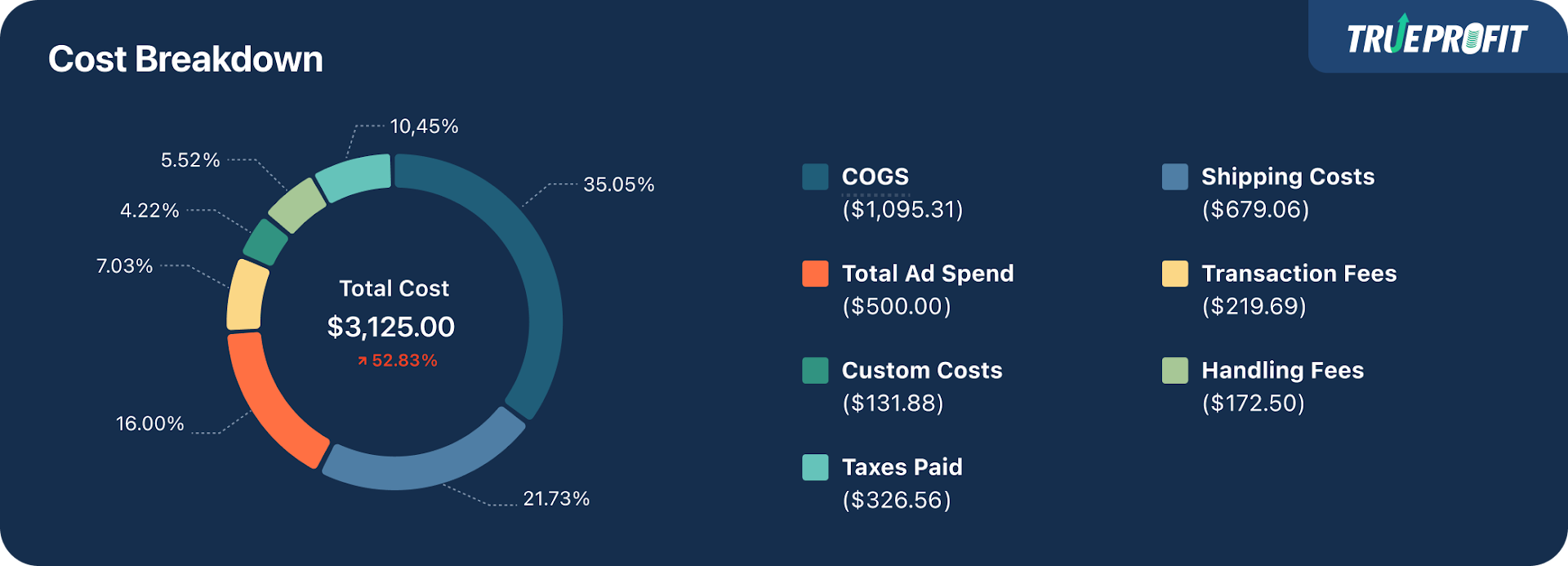How Much Does Shopify Take Per Sale in 2025? (Fees + Tips)

If you’re running an online store, knowing how much Shopify takes per sale is essential to tracking Shopify profits. In this post, we’ll break down Shopify’s fees by plan and payment method, explain what you can expect to pay on each transaction, and offer tips to help you manage these costs effectively.
How Much is the Subscription in Shopify?
Before diving into transaction-specific fees, it’s essential to understand the core subscription plans offered by Shopify. Shopify’s subscription fees range from $5 to over $2,000 per month, depending on your business size and needs.
Here’s a quick overview of each plan:
Shopify Starter – $5/month
Perfect for beginners who want to sell through social media or add buy buttons to an existing site. It doesn’t include a full online store.
Basic Shopify – $39/month
Includes a full eCommerce website with unlimited products, basic reports, and two staff accounts. Ideal for new or small businesses.
Shopify – $105/month
Designed for high profit margin small businesses. You’ll get better reporting tools, up to five staff accounts, and lower transaction fees.
Advanced Shopify – $399/month
Best for scaling businesses. Offers advanced reporting, third-party shipping rates, and up to 15 staff accounts.
Shopify Plus – Starts at $2,000/month
An enterprise-level plan built for high-volume businesses. Includes dedicated support, custom automation, and more flexibility.
Each plan also comes with different transaction fee rates and access to features like Shopify Payments, shipping discounts, Shopify analytics and reporting tools. Choose one based on how fast you're growing and what tools you need to scale.
How Much Does Shopify Take Per Sale?
Shopify takes a percentage of each sale as a transaction fee, depending on your plan and how your customer pays. If you use Shopify Payments, you don’t pay any additional transaction fees—only the standard processing fees apply.
But if your customer pays through a third-party payment provider like PayPal or Stripe, Shopify charges extra transaction fees on top of your provider’s processing fees.
Here’s what Shopify charges per sale in 2025:
Mode of Payment | Basic Plan | Shopify (Grow) Plan | Advanced Plan |
|---|---|---|---|
Online Payment | 2.9% + $0.30 | 2.7% + $0.30 | 2.5% + $0.30 |
In-Person Payments | 2.6% | 2.5% | 2.4% |
Third-Party Gateways | +2.0% | +1.0% | +0.6% |
Also, manual payment methods like Cash on Delivery (COD), bank deposits, and POS orders do not incur transaction fees.
Other Shopify Fees You Should Know
Beyond transaction fees, Shopify charges several additional fees depending on how you run your store. These fees can affect your overall profit, so it’s important to understand what might show up on your monthly bill.
To offset these costs, many merchants use a Shopify upsell app like Icart Cart Drawer Cart Upsell to boost order value.
Fee Type | Details |
|---|---|
Payment Processing Fees | Charged when a customer pays via credit/debit card. Rates vary by card type and country. Check your Shopify Payments settings for exact rates. |
Currency Conversion Fees | 1.5% for U.S. stores and 2.0% for stores in other countries (using Shopify Payments). Applied when the customer’s currency differs from your payout currency. |
Subscription Fees | Monthly fees for Basic, Shopify, or Advanced plans. Also includes paid apps or third-party tools added to your store. |
Shipping Label Fees | Charged based on carrier rates if you buy labels via Shopify Shipping Rates. Extra fees may apply (insurance, taxes, adjustments). |
Tap to Pay on iPhone | First 100 transactions/month are free. After that, $0.25 per transaction. Applies only when using Shopify POS with iPhone Tap to Pay. |
Shopify Tax (U.S. only) | 0.35% per transaction after $100,000 in U.S. sales (only in states where Shopify collects/remits tax). |
Shopify Email | 10,000 free emails/month. Additional emails billed monthly based on usage. Only applies if using Shopify Email for marketing. |
Shopify App Costs | Paid apps range from $5 to $100+ per month depending on features. Many best shopify apps also offer free plans or trials. |
Calculating Your Total Shopify Costs Per Sale
To calculate how much Shopify takes per sale, you need to consider payment processing fees, transaction fees (if any), and your subscription cost.
Let’s break it down with a simple example.
If you're on the Basic Shopify plan and sell a product for $100 using Shopify Payments, your cost is:
2.9% + 30¢ = $3.20 in processing fees.
If you use a third-party payment gateway, Shopify adds a 2% transaction fee, totaling:
$3.20 + $2.00 = $5.20 per sale.
Now, if you're on the Advanced Shopify plan and sell the same $100 item with Shopify Payments, the fee drops to:
2.4% + 30¢ = $2.70 per sale.
As you can see, higher-tier plans charge lower transaction and processing fees. But the higher monthly subscription means you'll need consistent sales volume to actually save money overall.
Your real per-sale cost depends on which plan you're on, the payment method used, and how often you sell. Keep an eye on these numbers to choose the most cost-effective setup for your store.
How Can You Reduce Shopify Costs Per Sale?
Shopify costs per sale are unavoidable—but that doesn't mean they should eat away at your profits. Here’s how smart merchants keep more of what they earn:
1. Use Shopify Payments (When Possible)
Shopify charges extra transaction fees (up to 2%) if you use third-party payment gateways like PayPal or Stripe. By switching to Shopify Payments, you avoid these extra charges and only pay standard processing fees—helping you reduce costs on every transaction.
2. Audit Your Apps Regularly
Apps are powerful but can quietly pile up costs, especially if you’re using multiple paid tools with overlapping features. Do a monthly or quarterly audit to cut what you don’t need, consolidate tools, or switch to more cost-effective options.
3. Track Fees by Product and Channel
To get an accurate picture of profitability, you need to track expense not just at the store level—but per product and per sales channel. That’s where profit tracker apps like TrueProfit comes in. It automatically captures costs like Shopify selling fees, ad spend, shipping, and COGS for each SKU and channel. The result? Accurate profit insights that power smarter pricing, sharper product strategy, and more confident business decisions.
Understanding how much Shopify takes per sale is crucial for managing your store’s profits. The fees vary based on your plan and payment method, but knowing these costs helps you set the right prices and plan your budget. Keep tracking your fees and sales carefully, and use this knowledge to grow your business smarter.
Lila Le is the Marketing Manager at TrueProfit, with a deep understanding of the Shopify ecosystem and a proven track record in dropshipping. She combines hands-on selling experience with marketing expertise to help Shopify merchants scale smarter—through clear positioning, profit-first strategies, and high-converting campaigns.



 Shopify profits
Shopify profits

